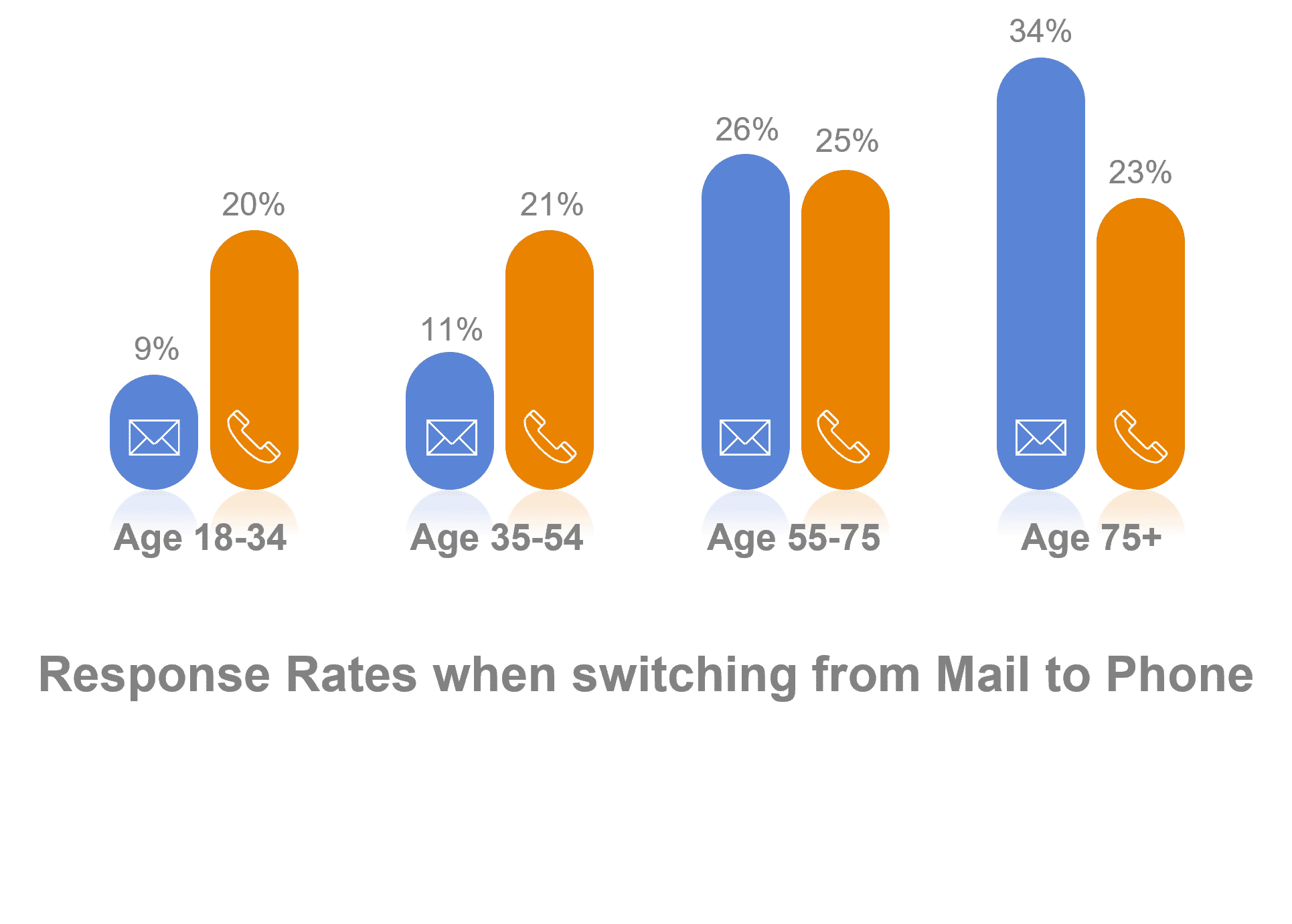A recent podcast published by CMS reviewed statistics surrounding representativeness among HCAHPS surveys and response rates for different survey modes. The continued need for a representative survey sample helps accomplish CMS’, and many organization’s goals for health equity, giving a voice to populations facing systemic health disparities. Response rates can ultimately contribute to the representativeness of the studies you conduct, and PRC’s proven approach to HCAHPS administration helps our client partners actualize both.

- The phone survey mode performs greater than or nearly equal to mail surveys in the majority of age demographics.
- Phone surveys likely create response rates that lead to greater representativeness among POC.

PRC prides itself on generating the highest HCAHPS response rates in the industry, employing a proven, finetuned approach to conducting phone surveys cultivated across our 40+ years in supporting the healthcare experience. Applying the information shared by CMS, this means we continually provide greater representation among the survey samples we reach, contributing to the accomplishment of CMS’ health equity goals. In addition to HCAHPS surveys, we also have a suite of healthcare experience solutions specifically geared towards measuring health equity and uncovering health disparities in the patient populations you serve.
Further, the benefit of high response rates extends beyond representation—given the positive correlation between response rates and survey performance, high response rates paint a clearer picture of your patient experience by connecting with those with a positive perception of their care but otherwise may not be reached to share their experience. Read more about the importance of response rates here.
In summary, high response rates are integral to improving representation and ultimately health equity in HCAHPS surveys. In instances where the mixed mode option isn’t possible, CMS analyses point to the phone model yielding higher response rates in most demographics and greater representation for POC populations. With this in mind, what can PRC’s industry-leading HCAHPS response rates mean for understanding your patient population and their experience in your organization? Contact us today to begin this conversation.
Sources & Further Reading:


